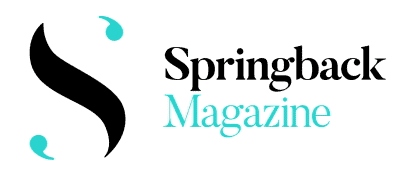We asked our three Berliners to attend three performances each at Potsdamer Tanztage, to get a feel not only for the festival, but also for the writers themselves.
As it turned out: 3 × 3 = 8 [+ 1 picnic].
Read on to find out more from David Pallant, Evgeny Borisenko and Annette van Zwoll…
David Pallant
Friday 1 June, 19.30, fabrik Potsdam
As I enter Miet Warlop’s Fruits of Labor, I’m handed a pair of earplugs. Ominous or promising? The grunge music played by four musicians at the start is gentle enough, Warlop standing on a rotating disc at the back, a glittering catsuit transforming her into a human disco ball. But as the lights go up, all hell breaks loose. What follows is a raucous blend of high-concept rock concert, wacky performance art, and physical theatre parody. Think Spinal Tap meets Salvador Dalí. (If you’re struggling to picture that, imagine trying to describe it.) The performers pelt us with a barrage of bizarre gems, aided by a truckload of props; a polystyrene block and set of drumsticks are put to particularly ingenious use. The ‘band’ exuberantly thrash out everything from screeching rock to melodramatic opera, grinning and gurning, using jets of coloured liquid to make an almighty mess of the stage. The technical trickery is impressive, but treated with a certain nonchalance as though, in this strange world, the normal rules of physics simply don’t apply. Each fragment is compelling, yet fleeting – why, after all, spend too long on an idea, when five others are waiting eagerly in the wings? There are plenty of absurdist pieces around, but Warlop’s extraordinary creativity elevates this above most.
Saturday 2 June, 18.00, Kirche Am Neuendorfer Anger
For Yasmeen Godder’s Simple Action, I find myself in a draughty old church, audience sitting in a circle with the six performers. One stands, offers her hand to the man sitting next to me, and leads him to the centre. She murmurs something, they embrace, and she lowers him gently to the ground. And that’s it: the eponymous simple action. An action which, in various roles and couples, we all execute at least once over the following hour. Set to Tomer Damsky’s haunting voice, soaring over a drone produced by a sort of accordion-in-a-suitcase, it takes on a meditative, ritualistic quality, as we form a continuous loop of slowly crumpling bodies. As a dancer myself, the physical experience was less of a revelation, but watching the pleasure, discomfort, even liberation of my fellow audience members was fascinating. By intelligently dismantling traditional performer/audience dichotomies, Godder offers an authentically immersive, inclusive work with great power to touch.
Saturday 2 June, 19:30, T-Werk
Louis Vanhaverbeke’s Multiverse is very much a one-man show. Vanhaverbeke sits rapping beside a ring of seemingly random household objects, his lyrics flitting between earnest and ironic. Running around his DIY henge, he grabs and disposes of items, building them into temporary structures, using them to act out theatrical vignettes. Portable record players provide a whimsical soundtrack, then serve as spinning cogs in precarious installations. The imaginative potential of normally functional objects is explored with a lightly-worn inventiveness that’s easy to appreciate. However, at one point Vanhaverbeke gets lost amongst the props, and the focus of the piece blurs. Hints of pathos to his performance lead us to search for meaning, yet none emerges. His attempt to show the nuanced ‘multi’ nature of everything, engagingly unconstrained at first, becomes aimless. Multiverse’s many stand-out moments shine brightly individually, but require a stronger centre of gravity to keep them in orbit.
A question for David
Evgeny: David, you’ve recently performed as a dancer in Potsdam yourself, and now you are here as a critic. Has your dance background influenced the way you watch, and conversely, has your newly grown critical eye informed the way you dance?
David: I would definitely say that I suffer from the same curse as many dancers, which is that it’s sometimes difficult to enjoy dance performances on an instinctive level – you end up fixating on the movement in a way which makes it harder to just be swept along by the work as a whole. Perhaps counterintuitively, attending performances as a critic has helped me move away from that: when you know you have to communicate what you’ve seen and felt to other people, you have no choice but to see and feel things more fully. As for my work as a dancer, it still feels quite separate from my critical writing. Let’s say that performing resides in the subjective side of my brain, and dance criticism in the objective – they’re neighbours but, for now, there’s not much community spirit.

















